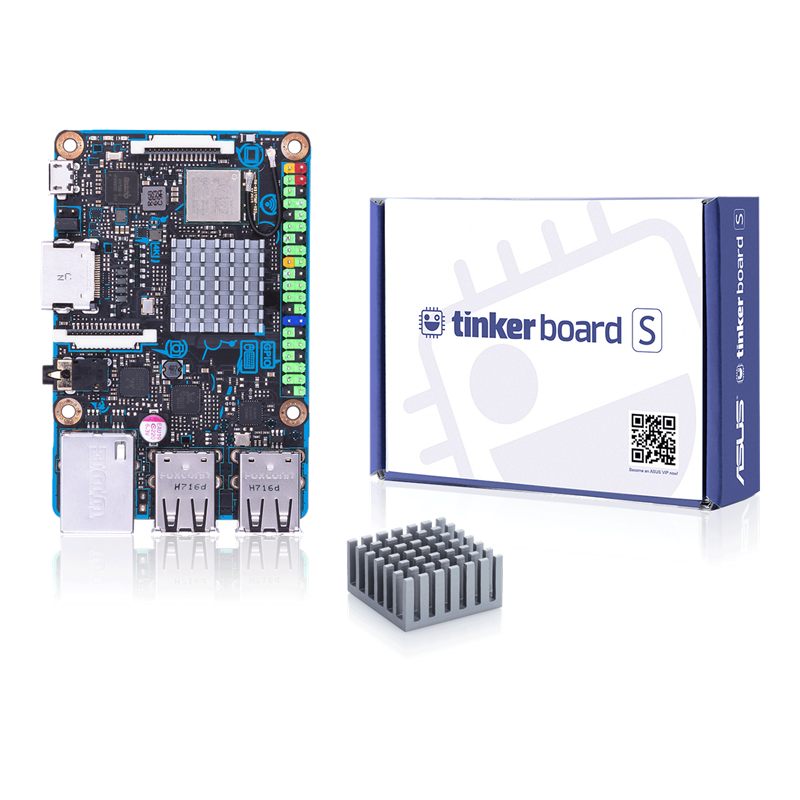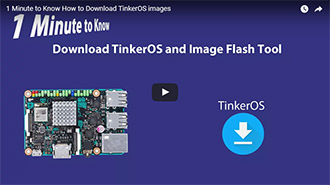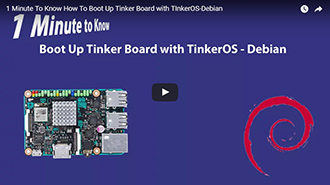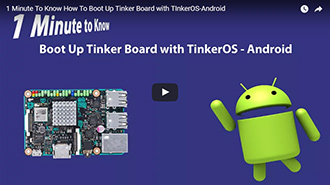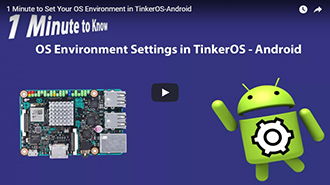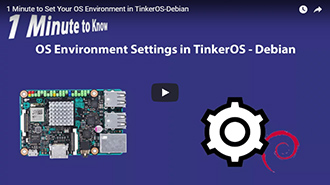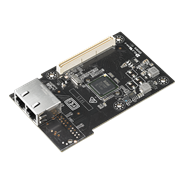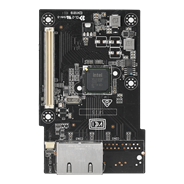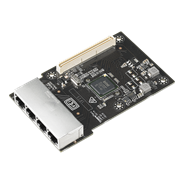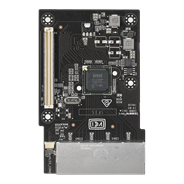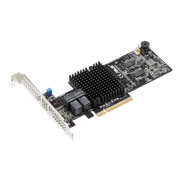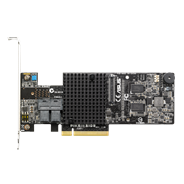tinker board S
tinker your way to the future

-
More Durable
• Onboard 16GB eMMC storage to enhance performance and stability, plus a microSD slot for greater flexibility
• Low-voltage input detection to avoid power issue and ensure system stability if using a non-qualified* power supply -
Better User Experience
• HDMI-CEC-ready for complete video entertainment, allowing users to command both Tinker Board S and a TV with a single remote control
• Audio jack plug-in detection and auto-switch to 3.5mm audio jack from other interfaces
-
Always Moving Forward with Makers
• Onboard power-on pin for makers giving more freedom when bringing their ideas to life.
• Enhanced I2S pin with Slave mode and an improved software API for better compatibility
* Non-qualified power supplies present a power output that differs from the value listed in the product specifications.
Learn More
| Tinker Board S | Tinker Board | |
|---|---|---|
| Processor | Cortex-A17 Quad-core 1.8GHz | |
| Display | 1 x 15-pin MIPI DSI supports up to HD 1 x HDMI up to 4K/30fps *HDMI CEC Hardware Ready |
1 x 15-pin MIPI DSI supports up to HD 1 x HDMI up to 4K/30fps |
| Memory Size | Dual-CH LPDDR3 2GB | |
| Storage | Onboard 16GB eMMC Micro SD(TF) card slot |
Micro SD(TF) card slot |
| Connectivity | 1 x GB LAN 1 x wireless 802.11 b/g/n & BT 4.0 + EDR |
|
| Audio | RTL HD Codec with 1 x 3.5mm audio jack *Supports Plug-in Detection and Auto-Switch |
RTL HD Codec with 1 x 3.5mm audio jack |
| USB | 4 x USB 2.0 ports | |
| Internal Headers | 1 x 40-pin GPIO header w/ enhanced I2S 1 x 2-pin eMMC recovery header 1 x 2-pin Power-on header |
1 x 40-pin GPIO header 1 x 2-pin contact points |
| Power Connector | Micro USB (5V/2~3A) *Supports low voltage input detection |
Micro USB (5V/2~3A) |
| OS Support | Debian 9 / Android 6 | |
| Dimension | 3.37" x 2.125" | |
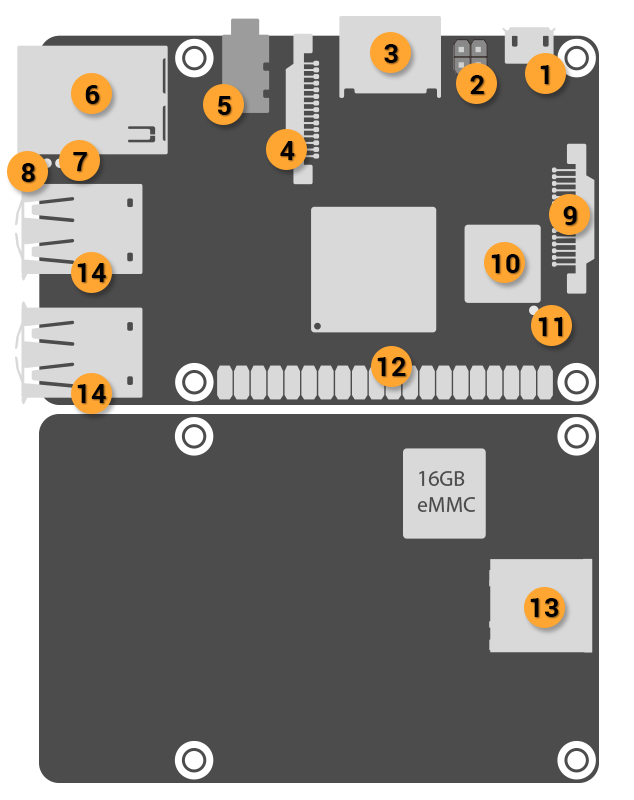

 Default
Defaultdisable
 Power-on
Power-on
 eMMC Recovery
eMMC Recovery
HD Audio
antenna header
Features & Functionality
Class-Leading Performance
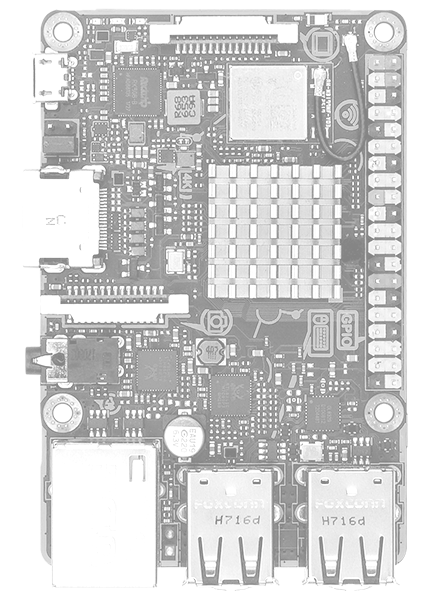
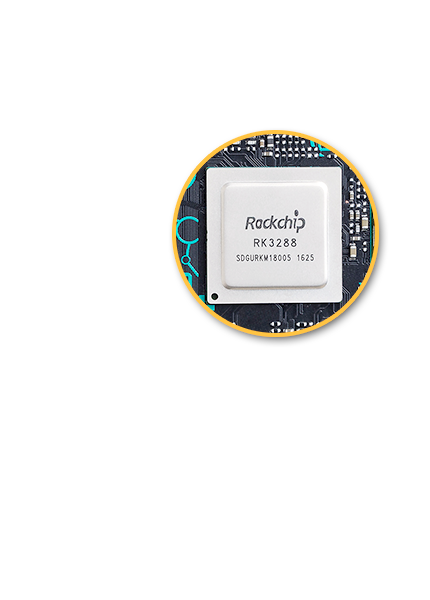
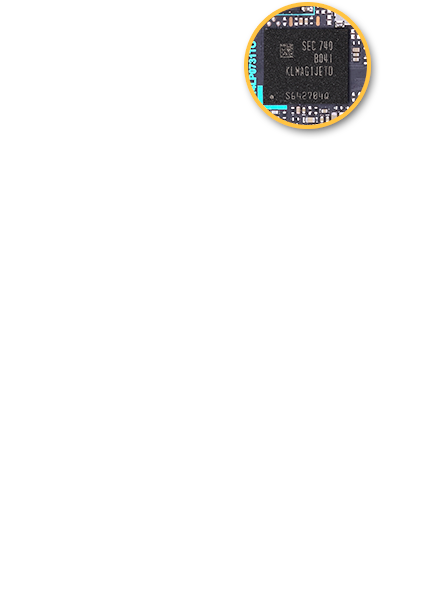
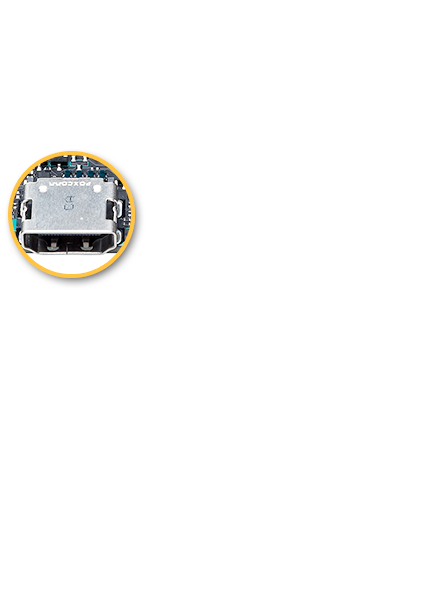

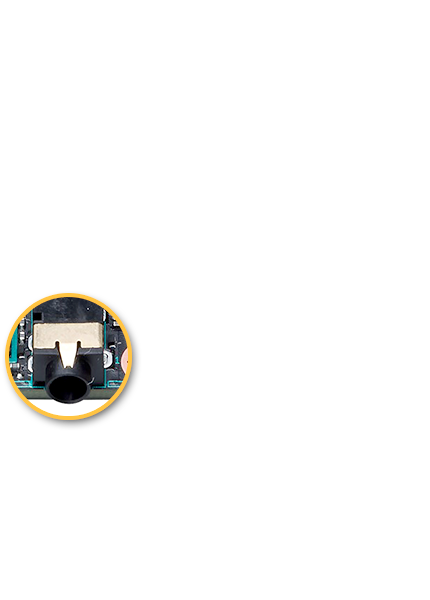

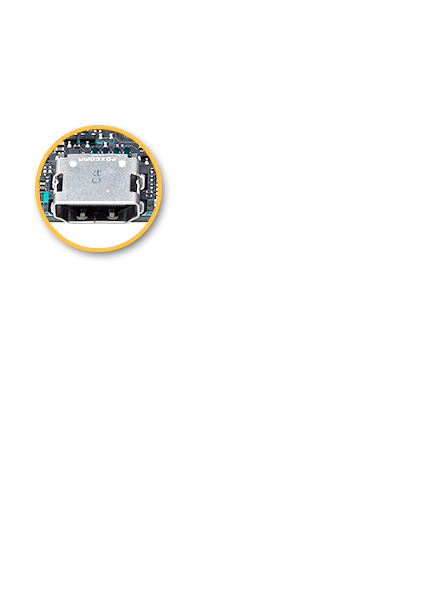

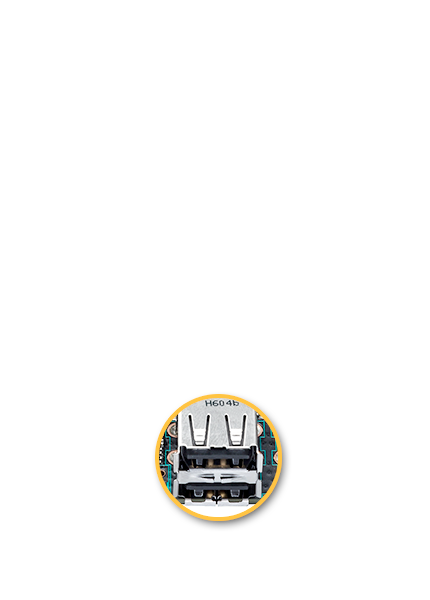

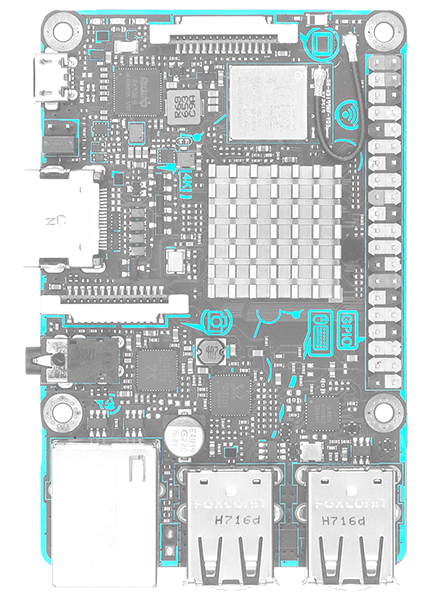

Robust GPU Performance & Functionality
Tinker Board S has HDMI CEC hardware circuit implemented, with the supported software, it allowing multimedia enthusiasts to control TV outputs using a single remote control for a better entertainment experience. Other fixed functions include H.264 and H.265 playback support, as well as HD and UHD video playback.*
*HD and UHD video playback at 30 fps on Tinker Board S is currently available via the included media player. Third-party video players and applications may not offer hardware acceleration, which will result in limited or unstable playback performance. Please refer to the FAQs for more information.
HD Audio Quality
Maker-Friendly, with IoT Connectivity
Tinker Board S also features Gbit LAN for Internet and network connectivity. A dedicated bus resource designed for the LAN port ensures consistent Ethernet performance. The integrated Wi-Fi and Bluetooth controller on the Tinker Board S is shielded with a metal cover to ensure minimal interference and improved radio performance. An integrated IPEX antenna header allows for easy antenna replacement or upgrades.
Tinker Board S also features a full-size HDMI output. Additionally, it includes four USB 2.0 ports for extensive peripheral and accessory connectivity.
Enhanced DIY Design
The PCB dimensions and topology of the Tinker Board S align with standard SBC boards, allowing support for a wide range of chassis and physical accessories. The PCB features silk-screening with a connection header and location callouts, for improved connection clarity. The onboard MIPI headers also feature color-coded pull tabs.
Tinker Board S also includes a heatsink, which helps improve heat dissipation under heavy loading or in hot ambient environments.
TinkerOS ‧ Supported OS ‧ Applications
Furthermore TinkerOS has been carefully designed to be extremely lightweight and responsive. Running on top of the base Debian 9 is a the LXDE desktop environment. This GUI is optimized specifically for SBC boards. It also features plug & play NTFS support allowing for easy access to Windows based flash drives and external hard drives. The included web browser has also been carefully selected and optimized. It based on Chromium allowing for speed and stability along with a number of extensions. The ASUS team has help to enable hardware acceleration of the browser allowing for improved web rendering and video playback including HD resolutions in YouTube.
TinkerOS also includes a number of popular applications allowing for easy programming and development. These include IDLE / Python as well as Squeak / Scratch.
Beyond TinkerOS and its Debian Linux offering Tinker Board S also support the Android Operating system. This allows for an entirely different usage scenarios ranging from media playback, gaming, and much more.
Tinker Board S Performance
CPU Performance
 Learn More
Learn More
GPU Performance

Stream and Memory Performance

eMMC & SD Card Read/Write Speed
.Read speeds: up to 422% faster
.Write speeds: up to 226% faster
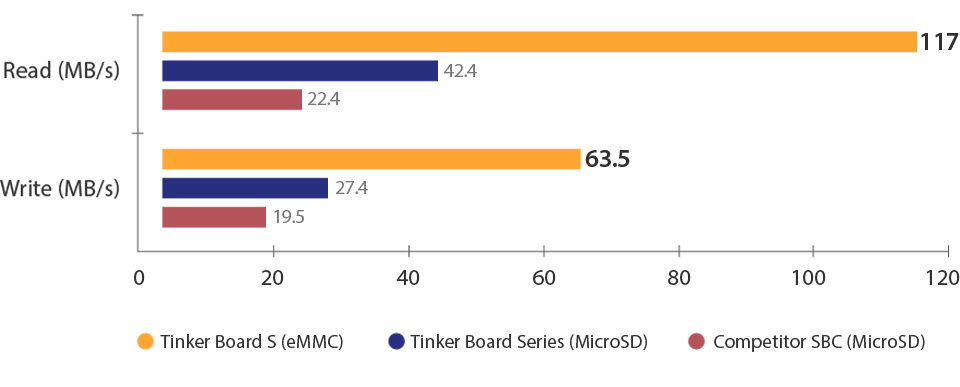
*Card spec: ADATA Premier UHS-I C10 64GBexFAT
Network/Audio Specifications
| Specification | Wi-Fi | Audio Format / Sample Rate |
Audio Function |
|---|---|---|---|
| Tinker Board Series | 802.11 b/g/n with upgradable IPEX antenna | Play: 24bit/192KHz, Record: 24bit/96KHz | Audio output, Microphone input |
| Competitor SBC | 802.11 b/g/n | 16bit/48KHz | Audio output only |
Networks Performance
.Transfer/receive speeds

.LAN performance with USB transfer

USB Speed
.Read speeds: up to 154% faster
.Write speeds: up to 6% faster

*Card spec: Kingston DataTraveler 64GB USB3.0
Wi-Fi Performance (Signal Loss)

| Location: OctoScope platform Target AP: ASUS RT-AC66U (Broadcom) |
Standard: b/g/n mixed Channel: 6 Bandwidth: 20MHz Security: none |
*Tinker Board S- OS: Linux 4.4.0+ armv7l l Image Version: V20170113 l Memory Type: 2GB l CPU Type, Speed[GHz]: Cortex-A17 Quad-core 1.8GHz l GPU Type, Speed[MHz]: Mali™ T-764
*Competitor SBC - OS: Linux 4.4.11+ armv7l l Memory Type: 1GB l CPU Type, Speed[GHz]: Cortex-A53 Quad-core 1.2GHz l GPU Type, Speed[MHz]: VideoCore IV
Community ‧ Contact Us
Share your idea with us via
Documentation
Getting started
Requirement:
.1 x Tinker Board power supply* or other qualified 5V/2-3A power supply**
.1 x Monitor
.1 x HDMI cable
.1 x Keyboard and mouse set
* Tinker Board power supply sold separately
** Cable must deliver up to 3A of power output
2. Download the TinkerOS image from the website and flash it into Tinker Board S using third-party ISO software such as Win32Disk Imager or Etcher.
3. Connect the power supply, keyboard, mouse and monitor to your Tinker Board S to boot up.
Hardware
Typically, Tinker Board S uses between 700 to 1000mA, depending on which peripherals are connected. It may use as little as 500mA when no peripherals are attached. Maximum power for the Tinker Board S is 1A. If you need to connect a USB device to bring power requirements above 0.5A, then you must connect to it via an externally powered USB hub.
The USB ports enable the attachment of peripherals such as keyboards, mice and webcams. This provides the board with additional functionality.
There are some differences between the USB hardware on the Tinker Board S and the USB hardware on desktop computers, laptops and tablets.
The USB host port inside the Tinker Board S is for power supply only, RK3288, was originally intended to be used in the mobile market, e.g. the single USB port on a phone for connection to a PC, or to a single device. In essence, the OTG hardware is simpler than the equivalent hardware on a PC.
OTG typically supports communication to all types of USB devices, but to provide an adequate level of functionality for most of the USB devices that one might plug into a tinker board, the system software has to do more work.
Learn More
Supported Devices
If you have a device and wish to use it with a tinker board, then plug it in. Chances are that it will be compatible. If you're running a graphical interface (such as an LXDE desktop environment in the OS), then it's likely that an icon or other message will pop up to announce the new device.
Port Power Limits
It should be noted that hot-swapping high-powered devices into the tinker board's USB ports may result in a brownout, which may cause the Tinker Board S to reset.
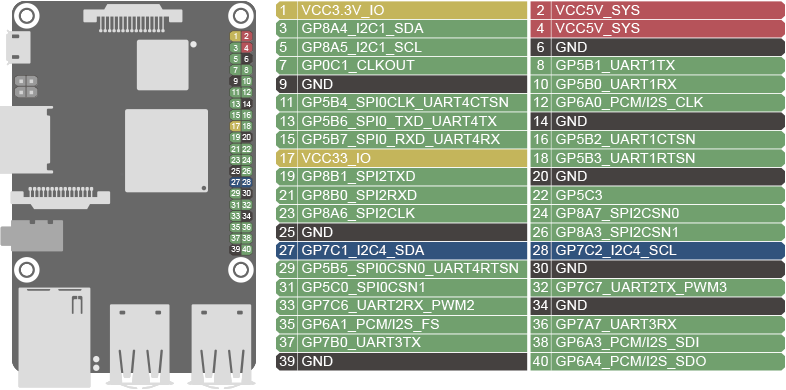
GPIO API
Python
1. Open a terminal and Install dependency package.
sudo apt-get update
sudo apt-get install python-dev python3-dev
2. Download Python GPIO library*
git clone http://github.com/TinkerBoard/gpio_lib_python.git
3. Navigate to folder
cd gpio_lib_python/
4. Install Python GPIO library for Tinker Board S
sudo python setup.py install
sudo python3 setup.py install
5. Reference codes
There're few sample codes under this folder /gpio_lib_python/test
*If get “git command not found”, please install git first by apt with follow commands. sudo apt-get update
sudo apt-get install git
C
1. Open a terminal and download C GPIO library*
git clone http://github.com/TinkerBoard/gpio_lib_c.git
2. 2. Navigate to folder
cd gpio_lib_c/
3. Install C GPIO library for Tinker Board S
sudo ./build
4. Check install success or not
gpio -v
gpio readall
5. Reference codes
There're few sample codes under this folder /gpio_lib_c/examples
*If get “git command not found”, please install git first by apt with follow commands.
sudo apt-get update
sudo apt-get install git
GPIO pinout
| GPIO.Setmode (GPIO.ASUS) |
GPIO.Setmode (GPIO.BOARD) |
Pinout | Physical Pin Number |
Pinout | GPIO.Setmode (GPIO.BOARD) |
GPIO.Setmode (GPIO.ASUS) |
| 1 | VCC3.3V_IO |
12 | VCC5V_SYS |
2 | ||
| 252 | 3 | GP8A4_I2C1_SDA |
34 | VCC5V_SYS |
4 | |
| 253 | 5 | GP8A5_I2C1_SCL |
56 | GND |
6 | |
| 17 | 7 | GP0C1_CLKOUT |
78 | GP5B1_UART1TX |
8 | 161 |
| 9 | GND |
910 | GP5B0_UART1RX |
10 | 160 | |
| 164 | 11 | GP5B4_SPI0CLK_UART4CTSN |
1112 | GP6A0_PCM/I2S_CLK |
12 | 184 |
| 166 | 13 | GP5B6_SPI0_TXD_UART4TX |
1314 | GND |
14 | |
| 167 | 15 | GP5B7_SPI0_RXD_UART4RX |
1516 | GP5B2_UART1CTSN |
16 | 162 |
| 17 | VCC33_IO |
1718 | GP5B3_UART1RTSN |
18 | 163 | |
| 257 | 19 | GP8B1_SPI2TXD |
1920 | GND |
20 | |
| 256 | 21 | GP8B0_SPI2RXD |
2122 | GP5C3 |
22 | 171 |
| 254 | 23 | GP8A6_SPI2CLK |
2324 | GP8A7_SPI2CSN0 |
24 | 255 |
| 25 | GND |
2526 | GP8A3_SPI2CSN1 |
26 | 251 | |
| 233 | 27 | GP7C1_I2C4_SDA |
2728 | GP7C2_I2C4_SCL |
28 | 234 |
| 165 | 29 | GP5B5_SPI0CSN0_UART4RTSN |
2930 | GND |
30 | |
| 168 | 31 | GP5C0_SPI0CSN1 |
3132 | GP7C7_UART2TX_PWM3 |
32 | 239 |
| 238 | 33 | GP7C6_UART2RX_PWM2 |
3334 | GND |
34 | |
| 185 | 35 | GP6A1_PCM/I2S_FS |
3536 | GP7A7_UART3RX |
36 | 223 |
| 224 | 37 | GP7B0_UART3TX |
3738 | GP6A3_PCM/I2S_SDI |
38 | 187 |
| 39 | GND | 3940 | GP6A4_PCM/I2S_SDO | 40 | 188 |
* We strongly recommend that you regularly backup all data stored in the device. ASUS shall not be liable for any damage to or loss of programs or data stored in the Tinker Board series, and shall not be responsible for data recovery, backup, or any charges arising therefrom.
* In no event shall ASUS be liable for any defect, damage or data loss arising from product repair or replacement.






